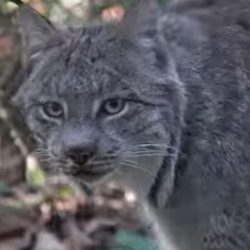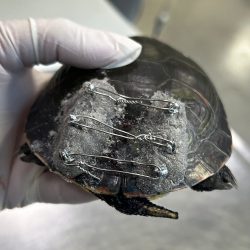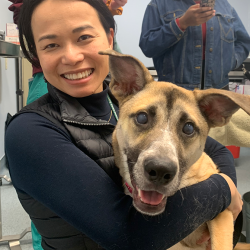Thanks to advancements in equine orthopedic surgery, fractures that once would have been considered end-of-the-road are not always so dire. Here’s how Spartan veterinarians helped Percy return to full function after a broken leg.
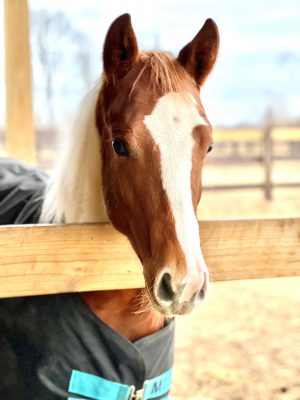
A broken leg is a serious problem in horses. Being extremely heavy, the animals must distribute their weight evenly on all four legs, or else the remaining legs will become overloaded. The added stress caused by so much weight on fewer legs can lead to laminitis, a painful condition that presents a significant barrier to maintaining a good quality of life for the injured horse.
So when Percy, a three-month-old American Paint Horse colt, suddenly showed signs of lameness after being turned out for the day with his mother and another mare, his owner, Abby Bigford, was concerned.
“Upon fetching them to bring them in for feeding, it became apparent he was not bearing any weight whatsoever,” she explains. “He was able to carefully hobble up to the stable, where he promptly laid down.”
Dr. Lauren Magley of veterinary clinic Classic Equine arrived at the farm within an hour. She ruled out an abscess and took x-rays, which revealed a spiral fracture of the left front cannon bone. While still on the farm, she immediately contacted Dr. Ashley Vanderbroek, a veterinary surgeon at Michigan State University’s Veterinary Medical Center. After reviewing the x-rays, Dr. VanderBroek instructed Dr. Magley how to appropriately stabilize the fracture for transportation to MSU.
“We were received at MSU by a competent and compassionate team of staff and students,” says Bigford. “I honestly felt like he was receiving better care than most humans do in hospitals.”
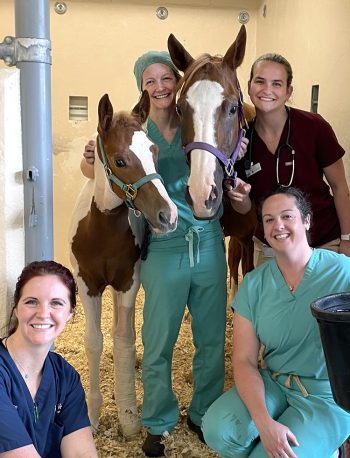
Assistant professor Dr. Ashley VanderBroek of Large Animal Clinical Sciences worked with residents Drs. Jackie Willette and Lindsay Monroe to devise a plan. Percy would need surgery to repair his fracture, and selecting the appropriate implants would be important to stabilize the broken bone.
“Mid-bone fractures of any long bone can be catastrophic in horses,” explains VanderBroek. “Unlike dogs and cats, amputation is not an option, since horses cannot survive on three limbs. Thankfully, Percy’s fracture was closed and non-displaced, which set him up for much better odds of success than if the fracture had been open and displaced.”
Through it all, Percy remained easy to work with.
“Percy was such a sweet little peanut from the beginning of the process,” says Bigford. “He never reared, thrashed, or resisted any treatment. It was as if he knew he desperately needed human help.”
In all, nine surgical screws were used to secure a locking compression plate to Percy’s bone. With the pieces of bone held in place by the implants, Percy’s fracture would have the opportunity to heal, aided by a bandage to protect the incision from infection. And his youth was on his side.
“His young age and smaller size at the time of injury greatly increased his prognosis compared to the same injury in a full-grown, adult horse,” explains VanderBroek.
Percy was expected to recover well and eventually return to full athletic ability—after a long period of rest and continued care. The colt required bandage changes every three days, daily antibiotics, and frequent temperature checks. He weathered the discomforts like a champ, according to his owner. “He was such a little prince! I fully expected the recovery process to be difficult,” says Bigford. “But I was stunned at how well Percy and his momma, Jessie, did on stall rest for eight weeks. They enjoyed snuggles, grooming, an endless stream of visitors, and baths.”
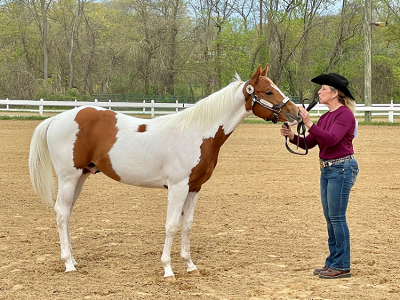
The dedication of Percy’s humans—Bigford, his many friends, and his medical team—played a large role in his healing.
“Dr. VanderBroek consulted often during the early days of his recovery,” says Bigford. “Her level of dedication to his full recovery was fully apparent. She is a perfect blend of wicked smarts and perfectly perfect bedside manners. We are forever grateful to the good doctor for saving our Percy.”
With the surgical implants allowing his bone to heal, Percy made a full recovery.
“Today Percy is thriving,” says Bigford. “His movement seems unaffected by his injury. He has successfully competed as a yearling at halter. Baybee Percy, which I think he will forever be named, is easy, willing, and curious! I have the utmost appreciation for Dr. VanderBroek and the entire MSU medical team. We were treated so attentively and with such empathy; our experience will not be forgotten.”

